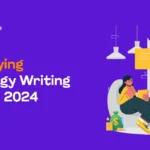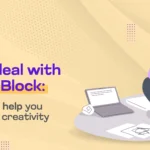Introduction
In today’s digital age, your profile is often the first impression potential employers, collaborators, or industry leaders have of you. Think of LinkedIn as your online professional resume, but even better. It’s a place to showcase your skills and experience, connect with other professionals, and find new opportunities. But to make the most of it, you need a strong profile that grabs attention.
Just like companies use special software tools to find the right people for a job, recruiters on LinkedIn use filters and search tools to find candidates. A good LinkedIn profile with the right words, job details, and skill endorsements can help hiring managers who use recruitment tools to notice you more.
This article will give you some easy-to-follow tips to build a LinkedIn profile that gets you noticed.
Importance Of Having a Strong LinkedIn Profile
A strong LinkedIn profile is like making a good first impression at a job interview. It helps people understand who you are and what you can do. Here are a few reasons why it’s important:
Showing Yourself
Your LinkedIn profile is like your online resume. It tells people about your skills, experience, and what you’re good at.
Building Your Reputation
A good LinkedIn profile shows you’re serious about your career. It can help you stand out from others and earn the trust of potential employers or clients.
Staying Current
Employers often use LinkedIn when hiring. Keeping your profile up-to-date lets you stay on their radar and shows you’re active in your field.
Strategies For Building a Strong LinkedIn Profile
Here are some key strategies for building a strong LinkedIn profile that grabs attention and positions you for success:
1. Professional Profile Picture
Use a clear and professional-looking photo where you’re dressed appropriately for your industry.
2. Compelling Headline
Write a headline highlighting your expertise and what you do best. This will make it easy for people to understand your professional identity. Here are some words to use and avoid.
Words to Use:
- Skills (e.g., Digital Marketing Expert, Data Scientist, Software Engineer)
- Industry Terms (e.g., Fintech, Blockchain, Healthcare)
- Action Verbs (e.g., Develop, Manage, Lead, Grow, Optimize)
- Power Words (e.g., Strategic, Innovative, Passionate)
Words to Avoid:
- Generic Terms (e.g., Experienced Professional, Highly Motivated)
- Overused Buzzwords (e.g., Think Outside the Box, Guru)
- Jargon Unfamiliar to Recruiters
- Personal Pronouns (e.g., I, Me, My)
3. Impactful Summary
Craft a concise summary that showcases your skills, experience, and career goals. Make it engaging and easy to read. Here are some words to use and avoid during your summary.
What to Use:
- Strong Action Verbs: Start with action verbs that showcase your skills and achievements. Replace “responsible for” with verbs like “managed,” “spearheaded,” or “increased.”
- Quantifiable Results: Whenever possible, quantify your accomplishments using numbers or percentages. Did you “improve efficiency” or “improve efficiency by 25%”? Show the impact of your work.
- Keywords: Tailor your summary to include relevant keywords from the job description or audience. This helps with searchability and highlights your qualifications.
What to Avoid:
- Generic Statements: Phrases like “highly motivated” or “team player” are overused and lack impact. Show, don’t tell.
- Technical Language: Unless your audience is highly technical, avoid jargon that might confuse them. Use clear and concise language.
4. Detailed Experience Section
List your work experience, focusing on achievements and responsibilities. Use bullet points to make it easy to skim through. Here are some structures to follow when creating your experience section.
Structure and Formatting:
- Reverse Chronological Order: List your work experiences starting with your most recent position.
- Company Name, Location, Dates of Employment: Include the company name, city and state (or country), and start and end dates for each position.
- Job Title: Clearly state your job title for each position.
- Bullet Points: Use concise and impactful bullet points to describe your responsibilities and achievements.
5. Highlight Key Skills
Add relevant skills to your profile and ask for colleague endorsements to validate your expertise. Be proactive in showcasing your skills and seeking endorsements to enhance your LinkedIn profile.
6. Education and Certifications
Include your educational background and any certifications or courses relevant to your career. Proudly showcase your academic achievements and certifications to enhance your professional credibility. Here are some structures to follow.
Structure and Formatting:
For each degree, use the institution name, which includes the full name of the university or college.
Location (City & State): Specify the institution’s city, state, and country.
Degree: Clearly state your degree (e.g., Bachelor of Science in Computer Science).
Graduation Year (Optional): If relevant, include your graduation year. (Some choose to omit for privacy reasons)
Certifications: List your professional certifications below your education section using reverse chronological order.
For Each Certification:
Certification Name: Clearly state the full name of the certification.
Issuing Authority: Specify the organization that issued the certification (e.g., Project Management Institute).
Year Obtained: You can include the year you obtained the certification (similar to graduation year for education).
7. Customized URL
Create a personalized LinkedIn URL that includes your name, making it easier for people to find you. You also create a more memorable and professional web address that reflects your identity.
8. Multimedia Additions
Incorporate images, videos, presentations, or links to your work to make your profile more engaging and dynamic, capturing the attention of recruiters and potential employers.
9. Engagement with Content
Share industry-related articles, comment on posts, and engage with your connections to demonstrate your knowledge and passion for your field. Don’t hesitate to share your thoughts, comment on posts, and connect with others to demonstrate your expertise and passion for what you do.
10. Networking and Connections
Connect with colleagues, classmates, and industry professionals. Engage in meaningful conversations and build relationships with your connections. You can expand your professional opportunities, gain valuable insights, and build a strong support system within your industry.
Examples of Well-Crafted LinkedIn Profiles
Olumide Okesipe – Marketing Strategist
- Olumide has a clear profile picture that shows that she looks professional.
- Her headline says, “Creative Design | Motion Design| Web Design.”
- In his summary, he talked about his passion for 3D design and his experience in brand design.
- Olumide’s experience section is detailed with bullet points highlighting his achievements in previous roles.
- He has a list of skills endorsed by her colleagues, showcasing his expertise.
- Olumide includes his education and any relevant certifications he has.
Chukwu Innocent – Software Developer
- Chukwu’s profile picture is professional and looks friendly and approachable.
- His headline says, “Software Developer.”
- In his summary, he talks about his love for coding and problem-solving.
- Chukwu’s experience section lists her previous jobs in software development and details of his accomplishments.
- He has a list of skills related to programming languages and WordPress development tools.
- Chukwu includes his education and any coding boot camps or workshops he attended.
Conclusion
To wrap this up, Having a strong LinkedIn profile is your online professional passport. Following the simple strategies outlined here, you can create a profile that grabs attention, showcases your skills, and positions you for success. Remember, LinkedIn is all about building relationships and making connections.
Explore TechWriteable’s blog for additional insights and reviews from their team. Our goal is to help you discover the ideal recruiting software tool tailored to the specific requirements of hiring managers and organizations.



